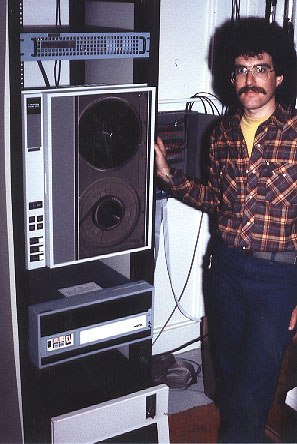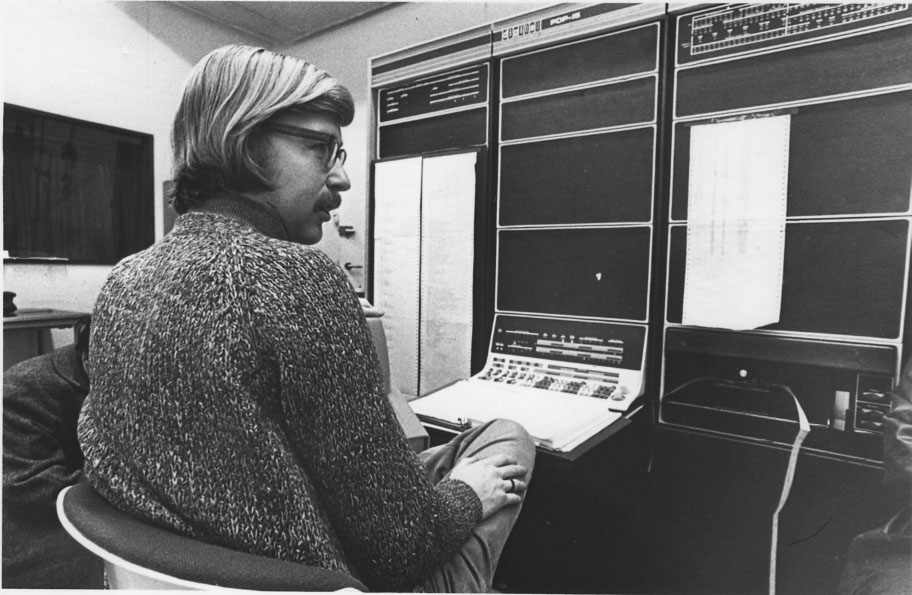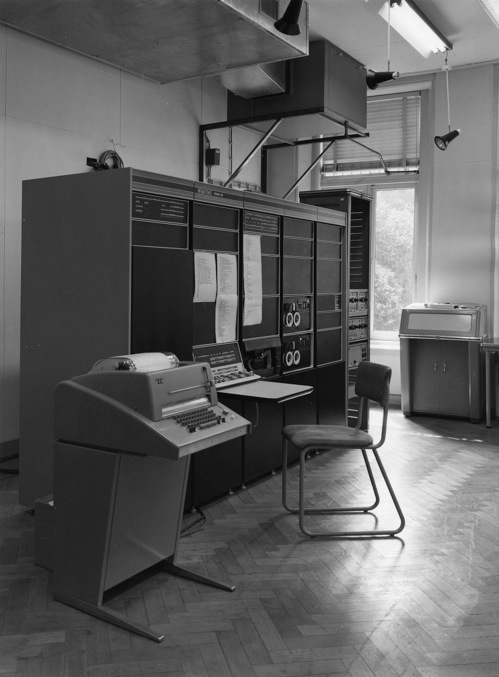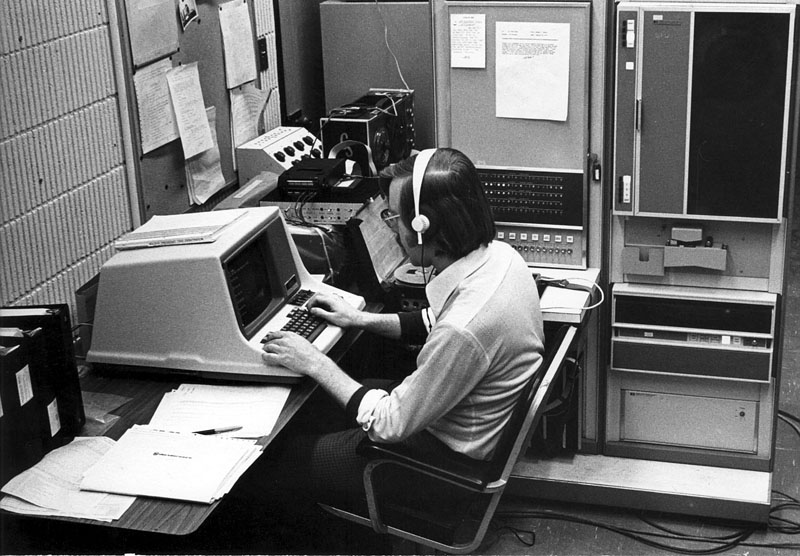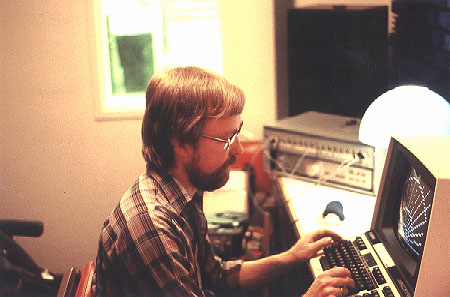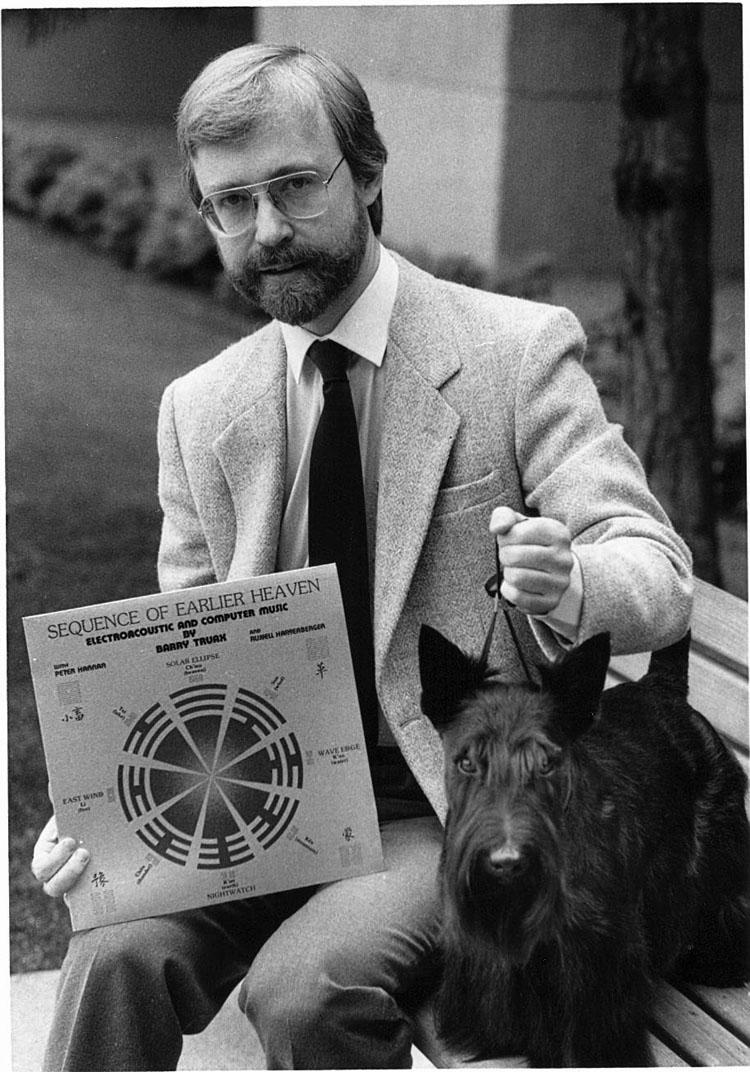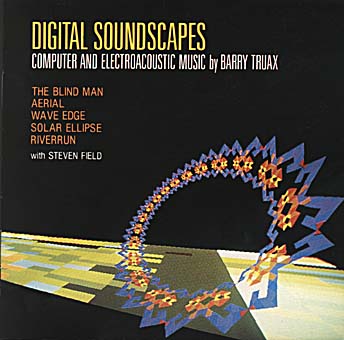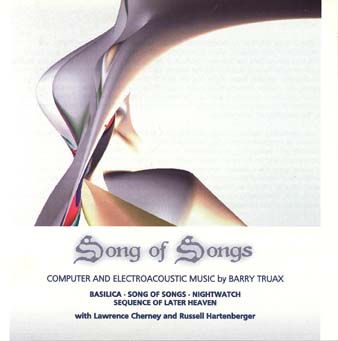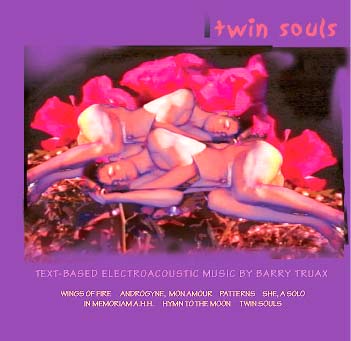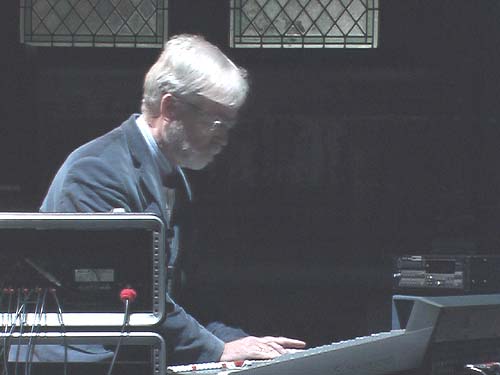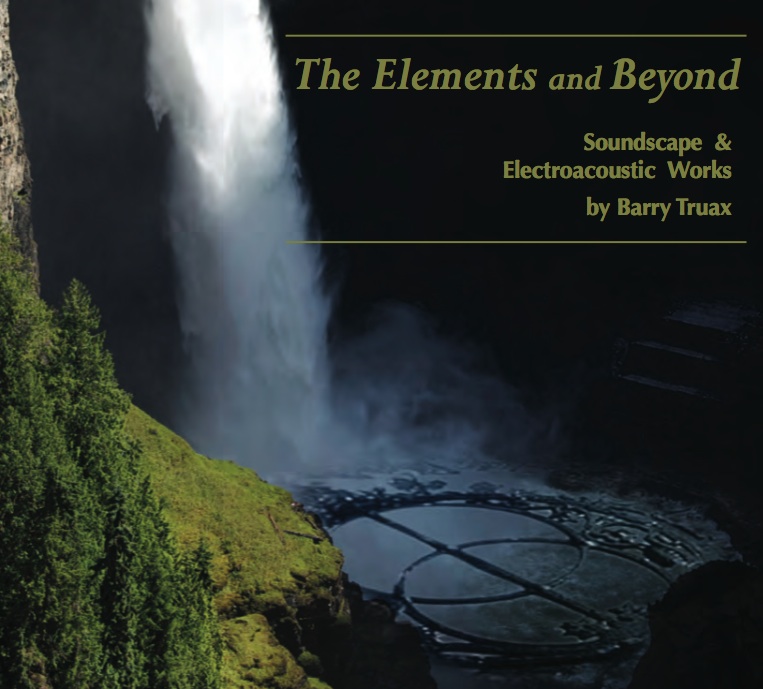1986
Real-time Granular Synthesis
program added (GSX) using the DMX microprogrammable
architecture with this synthesis
code
Computer Music Journal
article (1988)
Riverrun is composed with
real-time granular synthesis (re-mixed in 1987 in quad), and
demonstrated at the International Computer Music Conference,
in Urbana, IL, 1987. It was commissioned by the Music Section
of the Biennale di Venezia with the financial assistance of
the Canada Council, and was premiered at La Biennale in 1986
as part of the Nuova Atlantide project organized by Alvise
Vidolin and Roberto Doati. It was awarded the Magisterium at
the International Competition of Electroacoustic Music in
Bourges, France, in 1991. In 2004, a new 8-channel version was
prepared from the original tapes and premiered at the Sonic
Arts Research Centre, Queen's University, Belfast.
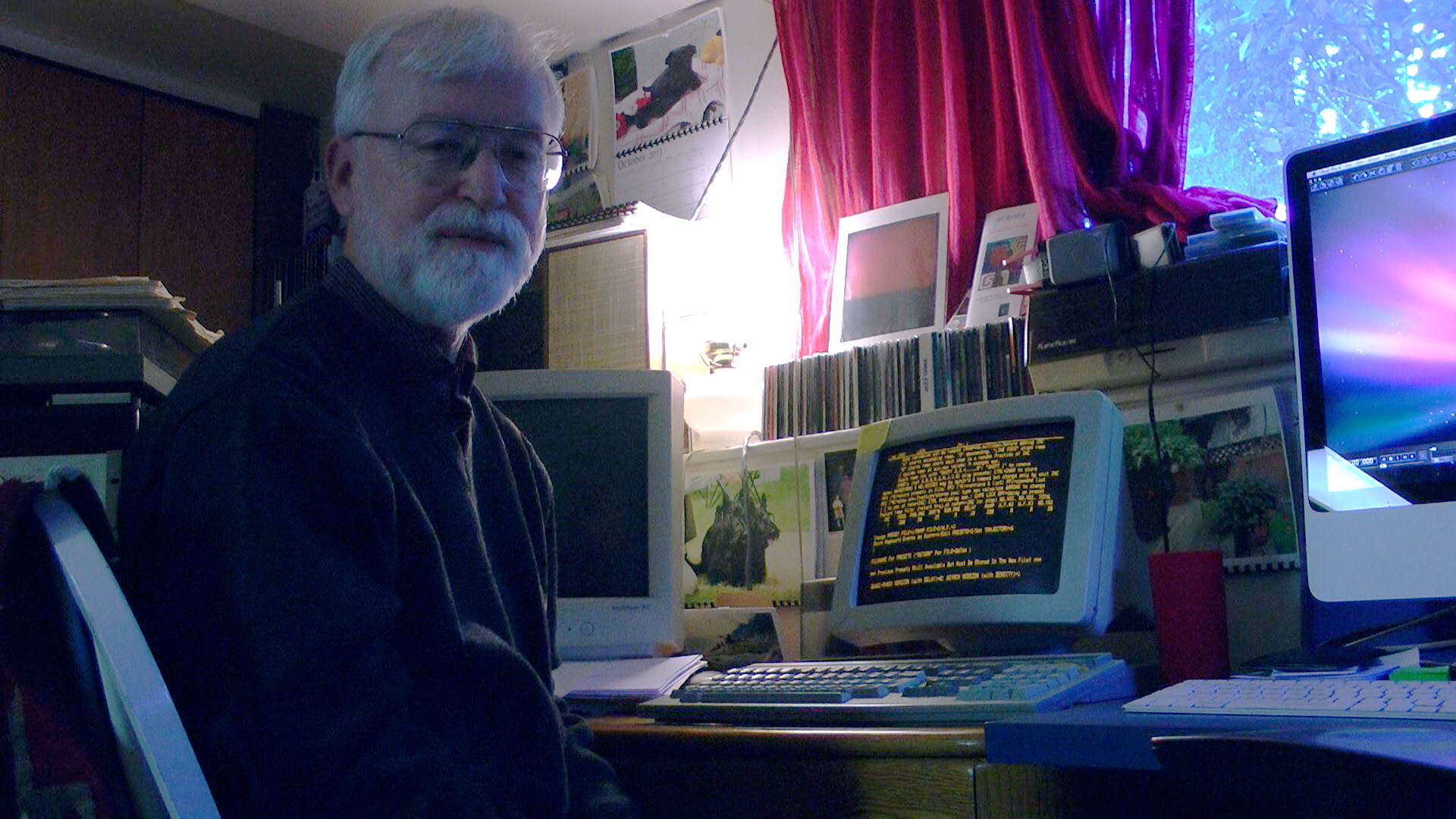
Watch a
video demonstration
of real-time granular synthesis with the GSX program and the
DMX-1000 in 2013
and an
interview
with Michael Clarke about
Riverrun
1987
Real-time Granulated Sampled Sound added to granular synthesis (GSAMX) initially using
only a short fixed sample (ca. 170 ms) in the DMX memory; Wings of Nike (1987) is composed
with this system, in a collaboration with Theo Goldberg's computer graphics,
and was premiered at the International Festival of
Electroacoustic Music, Bourges, France.
Cambridge Street Records releases Digital
Soundscapes, the first CD of independently
produced electroacoustic music in Canada, including four
computer-synthesized pieces and the analog work The Blind Man (1979)
1988
Initial work on a Motorola DSP 56001
board to be controlled by an Atari computer
1990
Digisound-16 converter added to PODX
enabling 16-bit conversion of analog samples to hard disk (at
sampling rates between 19 and 32 kHz); granulation and time
stretching incorporated, thereby allowing unlimited real-time
extension of sampled sound; the first works are Pacific (1990), Dominion (1991), Basilica (1992) and
Song Of Songs (1992), the
latter being commissioned by Lawrence Cherney with computer
graphics by Theo Goldberg.
Computer Music Journal
article (1994)
1991
Demo of Harmonc Functions'
"Quintessence Box" for real-time granular synthesis using DSP
56001 at ICMC 91, Montreal
1993
Quintessence Box incorporating
granular time stretching installed in SFU studios; prototype
of a multiple-DSP board designed by Harmonic Functions,
Burnaby
Sequence Of Later Heaven (1993)
and the stereo soundtrack for Bamboo,
Silk And Stone (1994), with live performance by
Randy Raine-Reusch, were created during this period
1995
Harmonic Functions' DM-8 box for computer-controlled diffusion demonstrated at ICMC 95 and installed in the Sonic
Research Studio at SFU
Karplus-Strong digital
resonators (single and double, in
mono or stereo) added to the real-time signal processing
modules during disk playback, in addition to reverb, stereo
delay, comb filter, multi-comb filters, high and low-pass
filters
Powers Of Two: The Artist
(1995) - the first of four acts in the opera to be composed -
is premiered at ICMC95 in Banff, AB, and also performed in
Vancouver
The complete work, including Powers of Two: Repetition, The Sibyl, and Beyond, is given a workshop
performance in Vancouver by Modern
Baroque Opera, June 2004, and a double CD, Powers of Two, released on the
CSR label the same year.
1996
PODX system "retired" to the author's
private studio in Burnaby where it continued to be
compositionally productive using the DA-88 8-track recorder
and (later) ProTools
The first pieces realized there were Wings
Of Fire (1996) for cello and soundtracks, Androgyne, Mon Amour (1996-97),
for double bass and soundtracks, and Pendlerdrøm
(1997) for two or 8 digital soundtracks. The first two, plus
other text-based pieces, are released on a CD Twin Souls .
1999
Harmonic Functions' Audiobox (a 16x16
matrix mixer) added to the system for computer-controlled diffusion
2000-2008
Island
(2000) is composed as a major 8-channel soundscape
composition, and published on the CSR CD Islands
along with other soundscape-inspired pieces
Steam (2001) combines granular
time-stretched soundmarks with an alto flute and has been
performed and recorded numerous times
Temple (2002) is the first to
use Impulse Reverb and Auto-convolution
using Tom Erbe's SoundHack software, spatialized in 8
channels, and is included on the CSR-CD Spirit
Journies, along with The Shaman Ascending.
Chris Rolfe's ABControl
software is instrumental in realizing the high density
spatialization used in The Shaman
Ascending (2004-2005), premiered at the
International Festival of Electroacoustic Music, Bourges,
France. His MacPod software for granular time-stretching has
become a standard worldwide. The Shaman was the last piece to
make substantial use of the PODX software for composition.
Since then, SoundHack, MacPod and ProTools have been the main
applications used and all of the pieces have been realized in
the 8 channel (and multiples of 8) format.
2009
Chalice Well
is composed with hybrid convolution of sampled sounds, and
is premiered in the Sonic Lab of the
Sonic Arts Research Centre, Belfast, using their 32-speaker
rig on four levels. It is released on a CSR CD, The Elements and Beyond, along
with 4 other works in an element-themed cycle
2010-present
Harmonic Functions’ TiMax2 matrix mixer,
initially marketed by Outboard Inc (UK) and later transferred
to FocusRite, added to the system for computer-controlled diffusion
Fire Spirits (2010) is the
first 8-channel work to utilize it, followed by From The Unseen World
(2012), Aeolian
Voices (2013), Earth and Steel (2013),
The Garden Of Sonic Delights
(2015-16), The Bells of
Salzburg (2018), Infinity Room
(2019), Rainforest Raven
(2020), What The Waters Told Me
(2022), How The Wind Caressed Me
(2023), When The Earth Mourned
For Me (2024), all of which were spatialized
using the TiMax2 Soundhub
Consult the list of
publications and recent papers
for various compositional documentations
2013
Michael Clarke and Frédéric Dufeu from
Huddersfield visit the system to document it as part of their
TACEM Project which includes a detailed analysis and
re-creation of Riverrun. This
work was published as Inside Computer Music,
Oxford University Press, 2020, chapter 2. Several videos, as
included above, were made of the system in operation. Shortly
thereafter, various hardware problems emerged that could not
be fixed and the system essentially was no longer usable.
After 31 years of productivity (and a previous 10 years of its
predecessor, the POD system), R.I.P. PODX!
As of today (Oct/25), there have been over 600 concert events worldwide
where Barry's works have been performed, with many solo and
retrospective concerts.
List
of
works realized with the POD and PODX systems
Octophonic
work catalogue including all those realized after the PODX
was retired
Note: More detailed
analyses of pieces realized with the system are included
in the composer's HTML Documentation as part of the WSP
Database (contact Barry at truax@sfu.ca for a guest
password)
References:
B. Truax, "Discovering
Inner Complexity: Time-shifting and Transposition with a
Real-time Granulation Technique", Computer Music
Journal, 18(2), 1994, pp. 38-48 (sound sheet examples in
18(1)).
B. Truax, "Real-time
Granular Synthesis with a Digital Signal Processor",
Computer Music Journal, 12(2), 1988, pp.14-26.
B. Truax, "The PODX System:
Interactive Compositional Software for the DMX-1000", Computer
Music
Journal, 9(1), 1985, pp. 29-38.
B. Truax, "Timbral Construction in
Arras as a Stochastic Process," Computer Music
Journal, 6(3), 1982, pp. 72-77.
B. Truax, "Computer Music
Composition: The Polyphonic POD System", IEEE
Computer, 11(8), 1978, pp. 40-49.
B. Truax, "The POD System of
Interactive Composition Programs", Computer Music
Journal, 1(3), 1977, pp. 30-39.
B. Truax, "Some Programs for
Real-time Computer Synthesis and Composition", Interface,
2, 1973, pp. 159-163.
B. Truax, "The Computer
Composition -- Sound Synthesis Programs POD4, POD5 and POD6",
Sonological Reports, No. 2, Utrecht State University,
Institute of Sonology, 1973.

